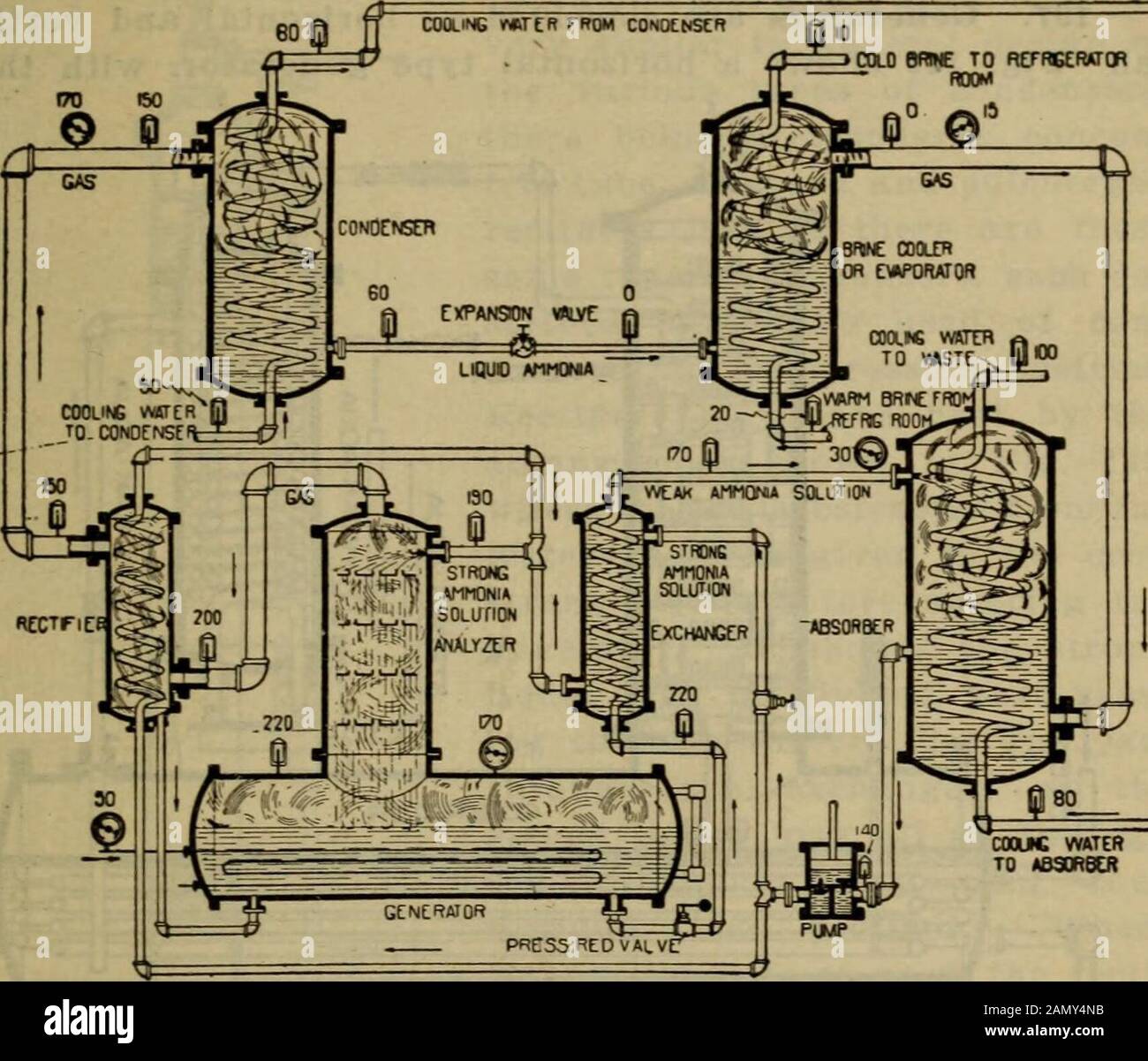Handbook for heating and ventilating engineers . nough thatthe heat of the iccuk liquor from the generator may be trans-ferred to the strong liquor going to the generator. Stated inother words, the exchanger heats the strong liquor by cool-ing the weak liquor, thus effecting a saving of heat whichwould otherwise be lost, since the weak liquor must becooled before it is ready to properly absorb the gas in theabsorber. 196. An Elevation of nn Absorption System with theelements piped according to what is considered best prac-tice is shown in Fig. 142. Starting at the expansion valve,the ammonia (

Image details
Contributor:
The Reading Room / Alamy Stock PhotoImage ID:
2AMY4NBFile size:
7.1 MB (359.1 KB Compressed download)Releases:
Model - no | Property - noDo I need a release?Dimensions:
1709 x 1461 px | 28.9 x 24.7 cm | 11.4 x 9.7 inches | 150dpiMore information:
This image is a public domain image, which means either that copyright has expired in the image or the copyright holder has waived their copyright. Alamy charges you a fee for access to the high resolution copy of the image.
This image could have imperfections as it’s either historical or reportage.
Handbook for heating and ventilating engineers . nough thatthe heat of the iccuk liquor from the generator may be trans-ferred to the strong liquor going to the generator. Stated inother words, the exchanger heats the strong liquor by cool-ing the weak liquor, thus effecting a saving of heat whichwould otherwise be lost, since the weak liquor must becooled before it is ready to properly absorb the gas in theabsorber. 196. An Elevation of nn Absorption System with theelements piped according to what is considered best prac-tice is shown in Fig. 142. Starting at the expansion valve, the ammonia (liquid, gas or gas in solution) passes in orderthrough these pieces of apparatus: the evaporator, the ab-sorber, the liquor pump, the chamber of the exchanger or thecoil of the rectifier, the generator, the chamber of the recti-fier and the condenser back to the expansion valve. At thesame time the liquor used to absorb the gas travels In ordrrthrough these pieces: the absorber, the liquor pump, tlie REFRIGERATION 297 COLD enwE TO refrkwor fVO*. aXUQ WATERTO ABSORGER Fig. 142. chamber of the exchanger or the coil of the rectifier, thegenerator, the pressure reducing valve and the coil of theexchanger back to the absorber. The method of pipe connec-tions shown is a very common one although some varia-tion may be found, especially in the continued use of cool-ing water in consecutive pieces of apparatus. As shown, the cooling water is first used in the condenser. This willbe found so in all plants. From the condenser the coolingwater may next be taken to the absorber, as shown in thesketch, or it may be used in the rectifier coil instead of thestrong liquor. In recent years the practice of by-passinga certain amount of the cool, strong liquor from the pumpthrough the rectifier is gaining in favor. Fig. 142 showsa plant having bent coil construction. Plants are also builthaving straight pipe construction, where all coil surfacesshown are replaxied by straight pipes, the condenser b